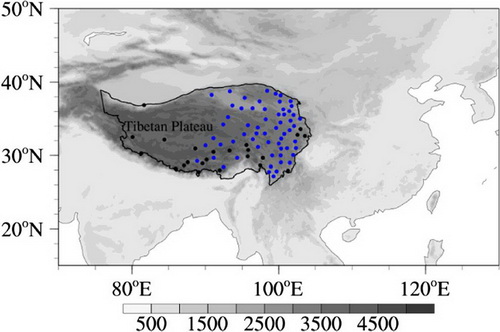Evaluation of Near-Surface Wind Speed Simulations over the Tibetan Plateau from Three Dynamical Downscalings Based on WRF Model
Updatetime:2018-01-26From:
【Enlarge】【Reduce】
The Tibetan Plateau (TP) has experienced significant climate changes in recent decades, and wind stilling is one of the most evident changes based on observations.
This study assesses near-surface wind speed simulations from three WRF dynamical downscalings over the TP. The assessment is conducted by comparing with observations at 83 stations over the TP and ERA-Interim in 1980-2005.
Results show that the three dynamical downscalings and ERA-Interim all overestimated the annual and seasonal wind speeds over the TP, especially in winter.
Overestimation of the U component is the main contributor to the larger overestimation, particularly in 3000-4000 m. Impacts of the land surface scheme on the simulations of wind speed are also noticed.
Observations show significant decreasing wind speed trend and the variability is larger at higher elevations above 4000 m, which are not represented in the ERA-Interim.
Affected by forcing, the dynamical downscalings do not capture the observed significantly decreasing trend, but they outperform the forcing in winter.
The better performance in winter but summer is mainly because the dynamical downscalings are unable to reproduce the observed direction of the U component in summer.
The ability of dynamical downscalings to simulate the near-surface wind speed may be improved by choosing forcing with better linear trends, enhancing the momentum transports in the planetary boundary parameterization scheme, and considering the unresolved topographic features sufficiently.

Geographical location and elevation of the Tibetan (Image by GAO Yanhong)
Appendix




